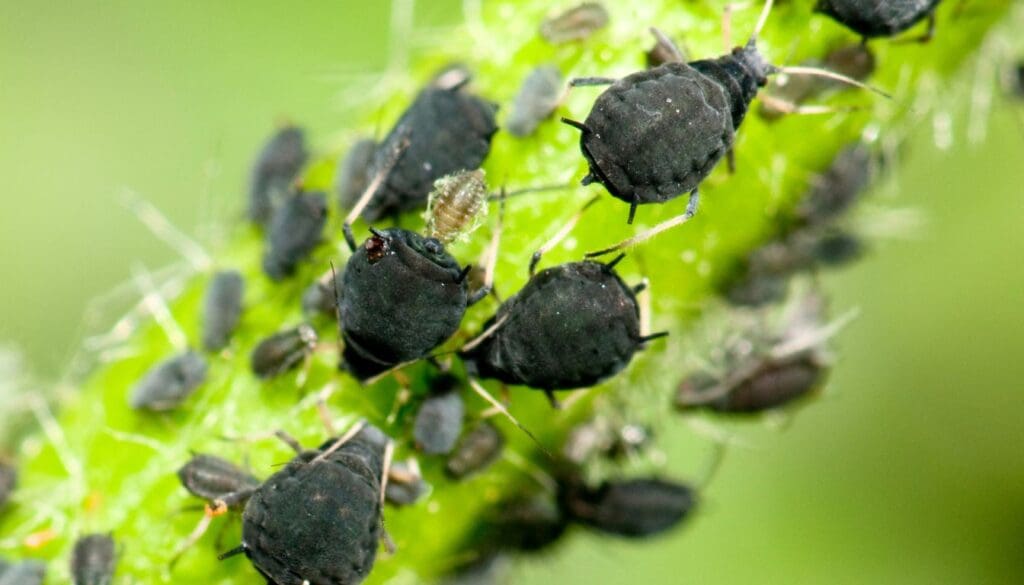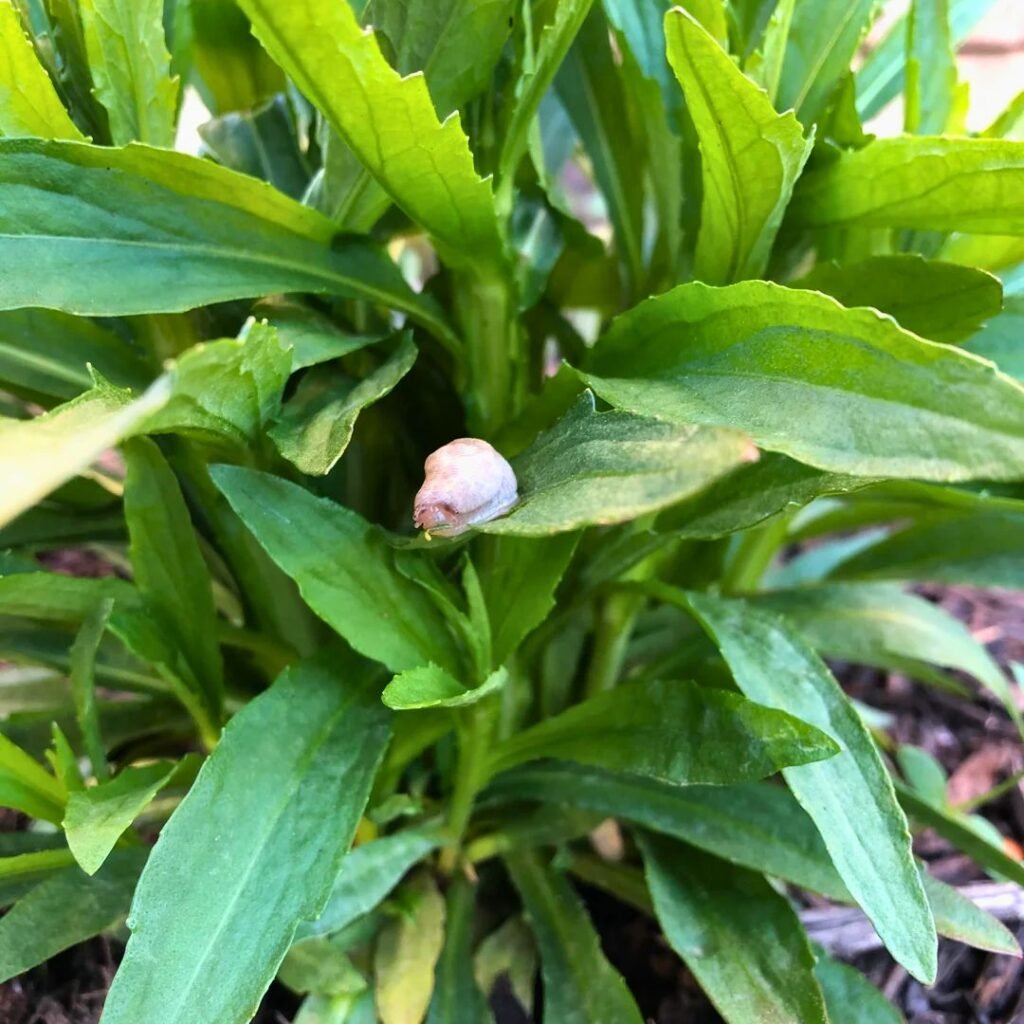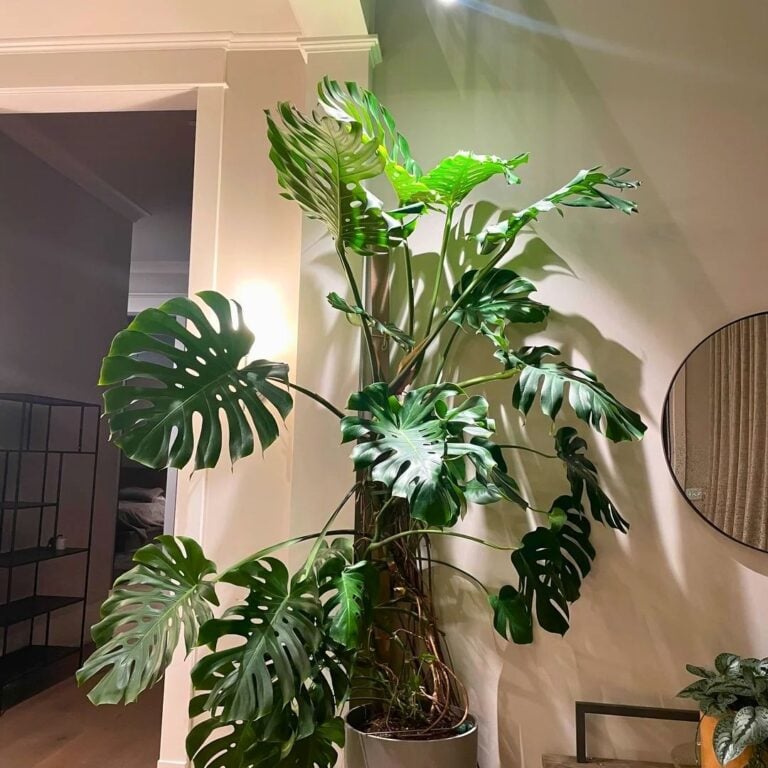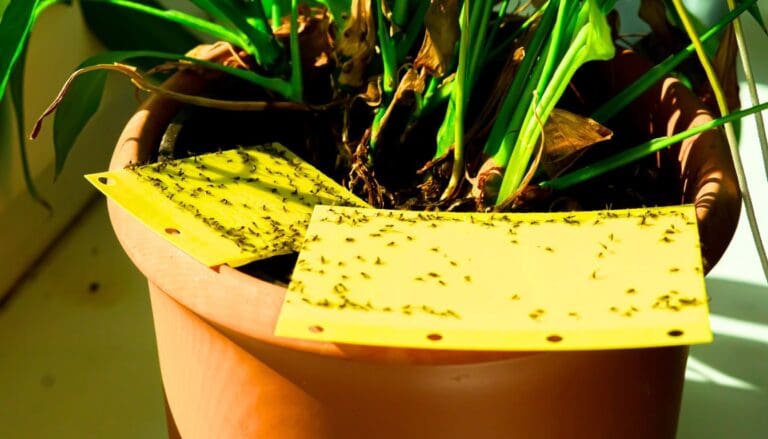6 Common Fall Plant Pests and How to Stop Them Naturally
When fall rolls around and the air gets crisp, I can’t help but notice more pests creeping into my garden. It’s honestly a little annoying—these tiny invaders can really mess up plants and take some of the joy out of gardening.
Let me share some easy, natural ways I’ve found to protect my plants from common fall pests. I like simple tricks that keep things healthy without going overboard on chemicals.
Please note: Simplify Plants is reader-supported. As an Amazon Associate, I earn from qualifying purchases made by our readers with no extra cost added to you all! Some links in the post are affiliate links and I get a commission from purchases made through links in the post.
1) Aphids: Use neem oil spray to keep them away

Aphids are those tiny, squishy bugs that love to suck the life out of my plants’ leaves and stems. Sometimes the leaves get all wilted or sticky, which is a dead giveaway.
Neem oil spray is my go-to fix for aphids. It’s made from neem tree seeds and basically coats the bugs, making it tough for them to eat or grow.
I usually mix about two teaspoons of neem oil with a quart of water, plus a couple drops of mild dish soap. I spray both sides of the leaves and cover any spots where I see the pests.
I always do this in the evening or early morning—never when it’s blazing hot, since that can burn the plants.
Every few days, I peek at the plants for new aphids. If I spot more, I just repeat the neem oil spray.
Neem oil is pet-safe and doesn’t bother helpful bugs like ladybugs if I use it carefully. I try to avoid spraying it right on the good guys.
Aphids can get out of hand fast, so I try to act quickly. Using neem oil regularly has been an easy, gentle way to keep aphids in check without any harsh stuff.
Feels pretty good knowing I’m keeping things safe and natural out there.
2) Caterpillars: Handpick and release far from plants

Caterpillars can chomp through leaves like nobody’s business. I’ll find chewed holes in my veggies or flower beds, and if I see little black droppings, I flip the leaves to check for them.
The simplest way to deal with them is just handpicking. Gloves on, I gently remove them and any eggs I spot.
I always walk them far away from the garden—releasing them in a wild patch keeps them from crawling back. No need for sprays that could hurt bees or other helpful bugs.
Some caterpillars are actually future butterflies or moths, so if I’m not sure, I’ll snap a photo and look it up. I try not to mess with the ones that turn into pollinators.
A quick check every morning helps me catch issues before things get out of hand. Staying on top of it makes a big difference.
3) Spider Mites: Spray water regularly to disrupt webs

I tend to spot spider mites in the fall, especially under the leaves. They’re tiny, reddish or yellowish, and spin these super-fine webs.
They suck the juice out of leaves, making everything look dry and sad.
One of the easiest ways I’ve found to keep spider mites away is to spray my plants with water. Sometimes I use a spray bottle, other times just the hose.
A strong spray knocks them off and busts up their webs. Breaking up their webs is key—they hide in there, so regular spraying gives them a hard time.
I try to spray every few days, usually in the morning or evening so the sun doesn’t scorch the wet leaves.
I always check under the leaves for mites or webbing. If things look bad, I’ll spray a bit more often.
Just using water is such a simple, chemical-free way to control spider mites. It fits my whole natural approach.
I keep my garden healthy by jumping in with water sprays as soon as I see any sign of mites. The earlier, the better.
4) Leaf Miners: Introduce beneficial nematodes

Leaf miners are sneaky little larvae that burrow inside leaves, leaving those weird squiggly trails. I spot them most often when I’m poking around in the fall.
Bringing in beneficial nematodes is one of my favorite natural solutions. These tiny worms live in the soil and go after leaf miner larvae before they can do much harm.
The best part? They don’t bother people, pets, or helpful bugs. They’re picky and only go after certain pests, including those pesky leaf miners.
I usually buy nematodes online or at a garden center—they come as a powder or on a sponge. I just mix them with water and pour or spray it around the plants.
Timing matters—moist, cool soil in the morning or after watering works best. That way, the nematodes can move around and find the larvae. I skip chemical pesticides when I’m using nematodes so I don’t accidentally wipe them out.
After adding nematodes, I keep an eye on my plants. If I see more squiggles, I might do a second round in a few weeks.
Patience is important here—these good guys take a little time to work.
5) Slugs: Set beer traps near vulnerable plants

When fall hits, slugs seem to pop up everywhere in my garden. They love the cool, damp weather and can munch through leaves and stems in no time. Lettuce and young veggies are their favorite targets.
To deal with slugs, I go for a classic natural method—beer traps. I bury a shallow dish near the plants they like, then pour in some cheap beer.
The scent draws slugs in. They crawl in and get stuck, which definitely cuts down their numbers. I check every morning and empty out the traps.
Any kind of beer will do—no need for anything fancy. I set the traps in the evening, since slugs are most active at night.
I swap out the beer every day or two, especially if it rains. This keeps the traps working and my veggies safer, all without chemicals.
I’ll put a few traps around the garden, focusing on the worst spots. Getting rid of their hiding places by clearing out old leaves or boards helps, too.
Honestly, I see way fewer slug problems using beer traps. It’s a cheap, easy, and safe trick—worth trying if slugs are bugging you.
6) Whiteflies: Plant marigolds to repel them naturally

Whiteflies are tiny, fluttery bugs that suck sap from leaves. Sometimes I’ll see them fly up in a little cloud when I brush past a plant. They can do real damage and even spread diseases.
Dealing with whiteflies used to stress me out, but I’ve found a trick that actually works. I plant marigolds near my veggies and flowers. The scent keeps whiteflies away.
Marigolds are super easy to grow and look great. Their bright flowers add color while acting as a natural pest control. I put them wherever whiteflies tend to show up.
I’ve noticed fewer whiteflies on plants surrounded by marigolds. No harsh chemicals needed—just flowers doing double duty.
If I see whiteflies, sometimes I’ll gently wash the leaves with water to knock them off. But planting marigolds is always my first move.
Using plants to protect other plants is just smart. Marigolds look good and help fight pests. Every fall, I toss in a few more near my favorite plants.
It’s simple, affordable, and just plain good for the garden. Seriously, give marigolds a shot if you’re tired of whiteflies.
Understanding Fall Plant Pest Behavior
I’ve realized that season changes bring new pest problems. Some pests get busier as the weather cools, while others disappear for a bit. Catching on to these patterns early really helps.
How Environmental Changes Affect Pest Activity
When autumn shows up, temperatures drop and the days get shorter. This makes a lot of pests hunt for shelter and food—guess where? My garden. Aphids and spider mites, for example, seem to love the cooler weather.
Moisture is a big deal, too. Rainy days make the soil nice and damp, which slugs and snails love. Dry spells, though, bring out spider mites. I even keep an eye on the wind, since strong gusts can blow new bugs onto my plants.
Here’s what I usually watch for:
- Cooler nights: More aphids showing up
- Rainy spells: Slugs hiding under leaves
- Dry weather: Spider mites spinning webs
Just knowing how the weather affects pests gives me a head start.
Recognizing Early Warning Signs in Your Garden
Catching problems early is everything. I always check for wilting leaves, sticky gunk, or holes in the leaves. Aphids leave behind a shiny, sticky mess called honeydew. Spider mites cause those tiny yellow dots and webs.
If I see bugs under the leaves, eggs, or bite marks, I know I’ve got company. Sometimes the plants look sick or yellow before I even spot the pests. I’ll use a magnifying glass to get a better look at the undersides.
Quick checks and jumping on problems fast really helps keep pests from taking over. I try to note any changes so I can react before things get out of hand.
Natural Methods to Prevent and Control Plant Pests

I stick to natural fixes to keep pests from wrecking my fall garden. These tricks are safer for my plants, the soil, and all those helpful bugs I want to keep around.
Encouraging Beneficial Insects
Helpful bugs like ladybugs, lacewings, and praying mantises eat up pests like aphids and caterpillars. I plant flowers like marigolds, dill, and yarrow to bring them in.
A little pile of twigs or rocks here and there gives these good guys a place to hang out. I try to skip chemical sprays so I don’t mess up their work.
If I’m not seeing enough helpful insects, I’ll sometimes buy them at a garden shop and let them loose outside. It’s a fun way to boost natural pest control.
Safe Homemade Pest Repellents
Homemade sprays are a handy way to keep bugs at bay. For garlic spray, I blend a bulb of garlic with water, strain it, and spritz the leaves. It’s pretty effective for a lot of pests.
A soap spray—just a tablespoon of mild dish soap in a quart of water—works for aphids, whiteflies, and spider mites. I only spray the bugs, not the whole plant, to avoid damage.
If I need something with more punch, I’ll mix up neem oil with water and a drop of soap. Still way safer than most store-bought stuff, and it covers a lot of different pests.
Effective Plant Companion Strategies
Companion planting is basically when I grow certain plants together to keep pests in check and boost growth. For instance, putting basil next to tomatoes helps chase off whiteflies and aphids.
I’ve found that planting chives or onions by carrots works wonders, since their scent throws off carrot flies. Nasturtiums are my go-to for luring away harmful bugs—they sort of act like decoys for the real crops.
Here’s a quick table of common companions:
| Crop | Good Companion | Pest Controlled |
|---|---|---|
| Tomatoes | Basil, Marigolds | Aphids, Whiteflies |
| Carrots | Onions, Chives | Carrot root flies |
| Cabbage | Nasturtiums | Aphids, Cabbage worms |
Frequently Asked Questions
I really prefer natural solutions for dealing with garden pests, especially once fall rolls around. Some of the best tricks I’ve picked up are simple home sprays, hands-on fixes, and just getting the right helpers involved for my soil.
What are some effective natural remedies to prevent insects from eating plant leaves?
I usually reach for neem oil spray to shield my plants from aphids and other leaf-nibbling bugs. Sometimes, just a blast of plain water helps—especially for spider mites, since it messes up their webs.
When it comes to caterpillars, I just put on gloves and pick them off. It’s not glamorous, but it works.
Can you share a recipe for a homemade spray to deter bugs from plants?
I mix up one tablespoon of mild liquid soap with one quart of water, then pour it into a spray bottle. I give the leaves a light mist, making sure to hit both sides.
The soap is great for stopping soft-bodied bugs like aphids and mites. It’s easy and doesn’t take much time.
What are some natural strategies for keeping unwanted insects out of my vegetable garden?
I like to set out beer traps for slugs—they’re surprisingly effective. Picking off caterpillars by hand and moving them away helps too.
Sometimes I’ll put down crushed eggshells around my garden beds. Crawling pests don’t like crossing that stuff, so it keeps them out.
How can I naturally remove bugs that have settled into my garden soil?
I add beneficial nematodes—they’re tiny worms that eat soil pests like leaf miners. Turning over the top layer of soil now and then also helps, since it exposes bug eggs and larvae to the sun.
What types of pests commonly affect plants during the fall season?
In the fall, I tend to notice more aphids, caterpillars, spider mites, leaf miners, and slugs popping up in the garden. They go after veggies, flowers, and even shrubs as things cool down.
Could you suggest natural methods to eliminate plant pests without harming the environment?
I try to steer clear of harsh chemicals and prefer using things like organic sprays, water, or just picking pests off by hand.
Natural predators—like nematodes—can keep bugs under control without causing problems for other wildlife.
That way, the garden stays a safer place for bees, pets, and honestly, anyone wandering through.
Recommended Garden Supplies
| Product Image | Our Recommended Gardening Supplies | Check Offers! |
|---|---|---|
Top Top
Top
Top
Top
Top
Top
Top
Top | rePotme Houseplant and Tropical Classic Potting Soil Mix | Check Offer On Amazon |
 Top
Top
Top
Top
Top
Top
Top
Top | Espoma Organic Indoor Plant Food | Check Offer On Amazon |
 Top
Top
Top
Top
Top
Top
Top
Top | GooingTop LED Grow Light 6000K Full Spectrum Clip Plant Growing Lamp | Check Offer On Amazon |
 Top
Top
Top
Top
Top
Top
Top
Top | Soil Moisture Meter | Check Offer On Amazon |
 Top
Top
Top
Top
Top
Top
Top
Top | Govee Hygrometer Thermometer, Bluetooth Enabled! | Check Offer On Amazon |
 Top
Top | LEVOIT Humidifiers for Large Room(Best For Plants) | Check Offer On Amazon |
 Top
Top
Top
Top
Top
Top
Top
Top | Upgraded DIY Automatic Drip Irrigation Kit, 15 Potted Houseplants Support | Check Offer On Amazon |
 Top
Top
Top
Top
Top
Top
Top
Top | Stainless Steel Heavy Duty Gardening Tool Set | Check Offer On Amazon |
 Top
Top
Top
Top
Top
Top
Top
Top | Bonide Insecticidal Soap | Check Offer On Amazon |
 Top
Top
Top
Top
Top
Top
Top
Top | Bonide 32 oz Spray Neem Oil for Organic Gardening | Check Offer On Amazon |
 Top
Top
Top
Top
Top
Top
Top
Top | Garden Safe Fungicide | Check Offer On Amazon |






